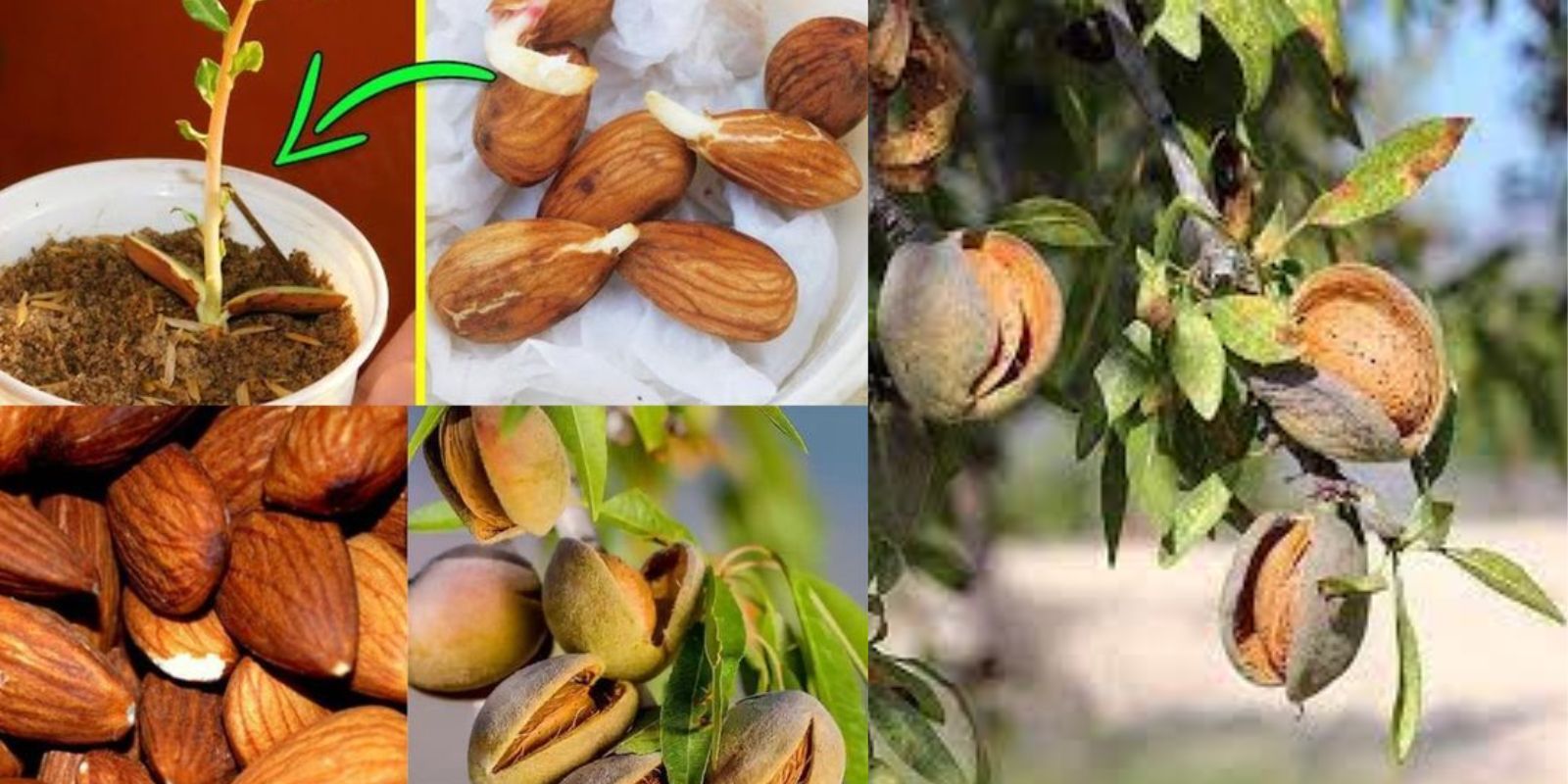Growing an almond tree from seeds at home can be a fulfilling and educational experience. These versatile and beautiful trees not only enhance your garden but also provide the joy of harvesting fresh almonds. Whether you’re a gardening enthusiast or just starting your journey, this guide will walk you through every step to ensure your success.
Why Grow an Almond Tree from Seeds?
Almond trees offer numerous benefits beyond their aesthetic appeal. They are drought-resistant, pollinator-friendly, and an excellent source of homegrown nuts. Additionally, starting from seed allows you to witness the incredible transformation from a simple kernel to a majestic tree. While it may take a few years to produce nuts, the process is worthwhile and rewarding.
Step 1: Choosing the Right Almond Seeds
The foundation of growing a healthy almond tree starts with selecting the correct seeds. Not all almonds will germinate, so it’s essential to use raw, unsalted almonds. Avoid roasted or processed ones, as they lose their ability to sprout.
- Purchase Seeds: Visit a trusted nursery or organic store to get untreated almonds.
- Inspect the Seeds: Ensure they are free of cracks or mold for the best results.
Step 2: Prepare for Germination with Cold Stratification
Almond seeds require a process called cold stratification, which mimics winter conditions and prepares the seeds for sprouting.
- Dampen a Paper Towel: Moisten a clean paper towel and wring out excess water.
- Wrap the Seeds: Place the almonds in the towel and fold it securely.
- Refrigerate: Place the wrapped seeds in a sealed plastic bag and store them in the refrigerator for 6–8 weeks.
- Monitor Weekly: Check for any signs of sprouting or mold. If mold appears, replace the towel.
Step 3: Planting the Almond Seeds
After stratification, it’s time to plant the seeds in soil.
- Choose the Right Pot or Location: Start with small pots or plant directly into the ground if you live in a frost-free area.
- Prepare the Soil: Almonds thrive in well-draining, sandy loam soil with a slightly acidic to neutral pH (6.0–7.0). Add compost to enrich the soil.
- Planting Depth: Sow the seeds 1–2 inches deep, ensuring the pointed end faces downward. Cover lightly with soil.
- Spacing: If planting multiple seeds, space them 6–8 inches apart in pots or at least 15–20 feet apart in the ground.
Step 4: Providing Optimal Growing Conditions
- Sunlight: Almond trees require full sun—at least 6–8 hours daily. Place the pots or plant in a sunny garden spot.
- Watering: Keep the soil moist but not waterlogged. Young seeds need consistent watering during germination and the early growth stages.
- Temperature: Almond trees thrive in areas with warm summers and cool winters. Protect seedlings from frost by covering them with mulch or relocating pots indoors.
Step 5: Transplanting and Long-Term Care
Once your seedlings have developed strong roots and grown to about 6–12 inches tall, they’re ready to be transplanted.
- Select a Permanent Spot: Choose a location with ample sunlight, well-drained soil, and space for the tree to spread its branches.
- Prepare the Hole: Dig a hole that’s twice the size of the seedling’s root ball.
- Transplant Carefully: Remove the seedling from its pot, keeping the roots intact. Place it in the hole and backfill with soil.
Step 6: Pruning and Maintenance
- Prune Regularly: Pruning is essential to shape the tree, remove dead branches, and improve air circulation. Do this during the dormant winter season.
- Fertilize Annually: Apply a balanced fertilizer in early spring to promote healthy growth and nut production.
- Pest Control: Watch for aphids, spider mites, and borers. Use organic insecticides or neem oil to manage pests.
Step 7: Patience and Nut Production
Growing an almond tree from seed requires patience. It typically takes 5–6 years for the tree to produce nuts, depending on the variety and growing conditions. However, with proper care, your almond tree will reward you with abundant harvests for decades.
Common Challenges and Solutions
- Seed Germination Failure: Ensure seeds are fresh and follow the cold stratification process precisely.
- Poor Growth: Test the soil pH and adjust if necessary. Almond trees prefer well-drained, slightly acidic soil.
- Pests and Diseases: Monitor for signs of fungal infections or insect damage. Implement preventive measures like mulching and natural pesticides.
Benefits of Growing Almond Trees at Home
- Fresh and Organic Nuts: Enjoy chemical-free, homegrown almonds.
- Eco-Friendly: Reduce your carbon footprint by growing your own food.
- Aesthetic Appeal: Almond trees add beauty and shade to your garden.
- Wildlife Habitat: The flowers attract pollinators like bees, contributing to a healthier ecosystem.
Conclusion: Start Your Almond Growing Journey Today!
Growing an almond tree from seed is a long-term commitment, but the results are worth every effort. By following these steps and providing consistent care, you’ll soon have a thriving tree that enhances your garden and offers fresh almonds.
🌟 Ready to grow your almond tree? Share your progress and gardening tips in the comments below!
Viral Gardening Hashtags
#GrowAlmonds #TreeFromSeed #SustainableGardening #HomeGardenGoals #NutTrees #GardeningLife #PlantLovers #EdibleGardens

